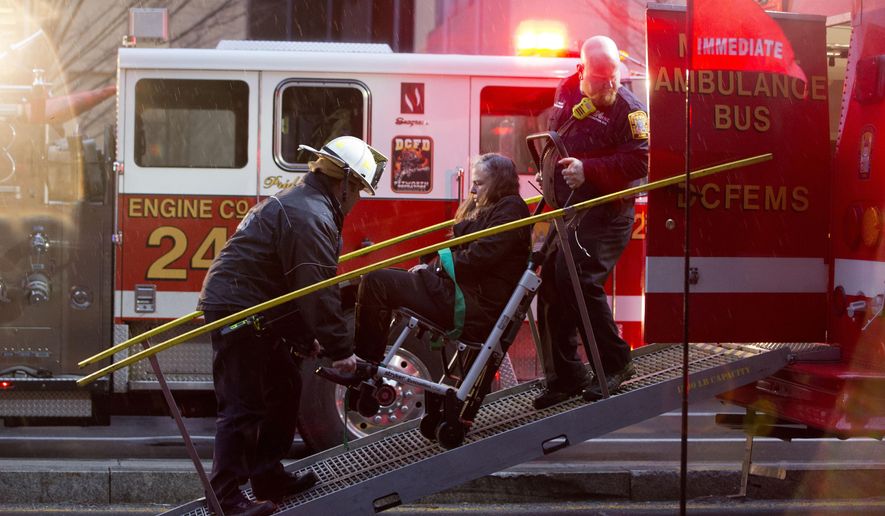National Transportation Safety Board investigators are looking into a second incident of smoke and electrical arcing that occurred on the Metro subway as they probe a deadly January incident to determine the cause.
NTSB officials announced Monday that they are collecting and examining evidence from the incident, which occurred Feb. 11 in a Northern Virginia Metro station to see if there are any similarities between it and a deadly Jan. 12 incident.
Investigators responded to the second smoke incident, which involved an Orange Line train traveling between the Court House and Rosslyn Metro stations, and already have taken some electrical components from the scene for examination. No one was injured in that case, and investigators are requesting additional materials from the scene for examination.
“That’s not unusual to bundle several incidents together in a similar investigation,” said NTSB spokesman Peter Knudson.
Carol Glover, 61, died and 86 others were hospitalized after the passenger-filled commuter train became disabled inside a tunnel and filled with smoke during the Jan. 12 incident at the L’Enfant Plaza Station.
A report by District officials indicates that passengers waited, coughing and gasping for clean air, for at least 30 minutes from the time the train stopped until first responders reached them and began an evacuation.
A preliminary report by the NTSB indicates that fans used to ventilate the L’Enfant Plaza Metro station during the incident actually pulled smoke toward the disabled train, where trapped passengers gasped for air.
In the Feb. 11 incident, the train’s operator reported smoke in the tunnel while approaching the Rosslyn Station, NTSB officials said. The train operator reversed the train back to the Court House Station, and the smoke was cleared within about an hour of the initial report, according to the NTSB.
The NTSB is continuing its investigation into the L’Enfant Plaza incident and is expected to hold a fact-finding hearing in June.
In the aftermath of the January smoke incident, both Metro and regional first responders have instituted a host of changes to address concerns raised by the emergency response.
Firefighters have conducted tests of their radio communications systems to determine where failures in communication occur within the train system.
Meanwhile, the NTSB has recommended that rail transit agencies nationwide examine their in-tunnel ventilation systems and review emergency procedures for fire and smoke events in the wake of the fatal Metro incident.
• Andrea Noble can be reached at anoble@washingtontimes.com.




Please read our comment policy before commenting.